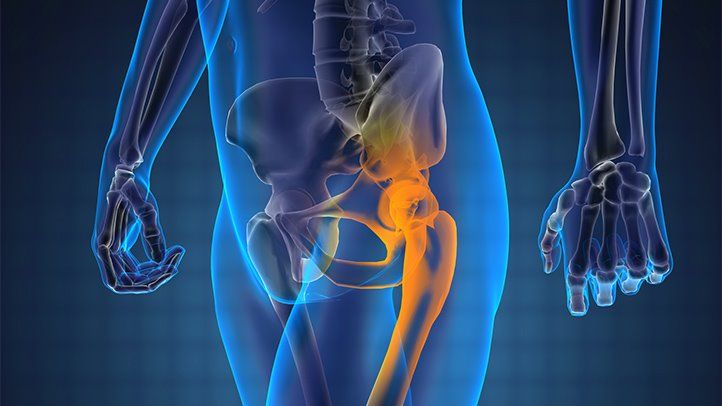Prostate Cancer
For the first time in history, prostate cancer is the most commonly diagnosed cancer in the UK. This melancholy milestone has arrived ten years earlier than predicted says the charity Prostate Cancer UK, which cited 57,192 prostate cancer diagnoses in 2018, a number that exceeds rates of breast, lung and bowel cancer diagnoses.
The prostate is a small gland, about the size of a chestnut, that naturally grows as a man ages and is found in the lower abdomen, under the bladder and surrounding the urethra, the tube that carries urine out of the body. The prostate, which is regulated by the hormone testosterone and contributes to the production of semen, is at risk of tumours that can grow here and spread to other parts of the body.
Awareness is much higher thanks, in part, to the work of charities like Prostate Cancer UK and the likes of high profile figures like presenter and journalist Bill Turnbull and Stephen Fry who both shared their stories in the same year, leading to a surge in doctor’s referrals.
How Many Types Of Prostate Cancer Are There?
There are three types: localised prostate cancer, locally advanced prostate cancer, and advanced prostate cancer.
It’s possible to live with localised prostate cancer (sometimes referred to as early or organ-confined prostate cancer, or stage T1 or T2 prostate cancer), which is inside the prostate and hasn’t spread to other parts of the body. This type of prostate cancer either grows slowly or not at all, has a low risk of spreading, and is managed by regular check-ups to ensure it’s not growing too fast.
These recent prostate cancer figures have shown that a higher percentage were caught at the locally advanced stage (sometimes referred to as T3 or T4 prostate cancer) when the cancer has started to spread to the area just outside the prostate, but not to distant organs. Prostate cancer caught at this stage is far more treatable than advanced prostate cancer, which can spread to any part of the body but most commonly to the bones and lymph nodes. This stage is sometimes referred to as metastatic prostate cancer or secondary prostate cancer and, unfortunately, is not curable but can be managed by treatments.
What Are The Symptoms?
Urinary problems are a common symptom because of the prostate’s position beneath the bladder and around the urethra. Telltale signs include a frequent need to urinate, difficulty urinating, a stream that’s slower than normal, a feeling that your bladder hasn’t emptied properly, a sudden need to urinate, and bleeding while urinating. However, many of these can also be a sign of a benign prostate problem, such as prostatitis, an inflammation of the prostate. Other men have reported erectile dysfunction and when prostate cancer metastasises, it can result in pain in the pelvic, back, and chest. medications, exposure to irritants or foreign materials that the body can’t easily eliminate, pathogens – a bacteria or virus – that the body can’t break down, and recurrent episodes of acute inflammation can lead to a chronic inflammatory response.
An autoimmune disorder, which involves your immune system mistakenly attacking healthy tissue even when there are no foreign substances present, is also linked to chronic inflammation. There are over 80 types of autoimmune diseases including Type 1 diabetes, rheumatoid arthritis, psoriasis, asthma, Crohn’s Disease, multiple sclerosis, lupus, and celiac disease, among others, and doctors are still unsure why the body attacks itself. Factors that increase the risk include of chronic inflammation include older age, obesity, an unhealthy diet, smoking, stress, sleep problems, and low sex hormones.
What Are The Risk Factors?
Age is the primary risk factor with prostate cancer mainly affecting men over fifty. Those with a family history of prostate cancer and black men are also at risk. In the UK, about 1 in 4 black men are diagnosed with prostate cancer and although the cause is still unknown, Professor Ros Eeles is currently undertaking a five-year study into the genetic risks of prostate cancer. Prostate Cancer UK has more here: https://prostatecanceruk.org/riskresearch
How Is It Diagnosed?
The most common test is a PSA blood test at your doctor’s surgery, which measures the amount of prostate-specific antigen (PSA) in your blood, a protein produced by normal cells in the prostate and also by prostate cancer cells. It’s normal to have a small amount of PSA in your blood and that amount will rise slightly as you get older and as your prostate gets bigger. Please be assured that a raised PSA level may suggest you have a problem with your prostate, but not necessarily cancer.
The digital rectal examination (DRE) involves a doctor or nurse feeling your prostate through the wall of your rectum to check its size, and any lumps or hardness. It is not an entirely accurate test, which is why scans and biopsies, where a small piece of your prostate gland is removed for examination, are often required to help confirm a prostate cancer diagnosis.
But very welcome advancements announced in July 2020 could change current prostate cancer protocol and save more lives. Scientists at Nottingham Trent University and University Hospitals Leicester NHS Trust have devised a blood test and computational tools that, when combined, can confirm the presence or absence of prostate cancer and also the stage – low, intermediate, or high-risk. This test would follow the PSA test, benefiting men who are showing no symptoms but have a slightly elevated PSA level. This could mean a 70 percent reduction in invasive biopsies and help identify patients needing urgent treatment or closer monitoring.
“New interventions for more accurately detecting the presence of prostate cancer are urgently needed,” said Professor Graham Pockley, Director of Nottingham Trent University’s John van Geest Cancer Research Centre.
“Our approach not only identifies the presence of the disease but also – crucially – its clinical significance. We can also do this with higher accuracy than current approaches. This will spare men from having unnecessary invasive procedures and help clinicians to decide whether to ‘watch’ or ‘actively manage’ patients, even when they are asymptomatic but have mildly higher PSA levels.”
Due to the reduction in unnecessary biopsies, this would also result in significant savings for the NHS.
How Can Medical Cannabis Help With Prostate Cancer?
To date, scientific research on how cannabinoids – naturally-occurring chemical compounds – in medical cannabis can treat cancer have almost entirely taken place in a laboratory or in animal models, which means medical trials on humans are necessary.
What we do know is that the body naturally produces cannabinoids, like the cannabis plant, which are called endocannabinoids (from ‘endogenous’ which means ‘growing or originating within an organism’).
Our endocannabinoid system is responsible for maintaining homeostasis within the body and regulates a variety of functions including sleep, digestion, pain, memory, fertility, inflammation, mood and cognition. Our endocannabinoids bind to endocannabinoid receptors, of which there are two types: CB1 receptors, which are in the brain and central nervous system, and CB2 receptors, which are in the immune system. Enzymes then break down endocannabinoids once they’ve carried out their intended function to continue homeostasis.
When our endocannabinoid system becomes deficient – when the body isn’t correctly making endocannabinoids, if there aren’t enough receptors, if there is an overabundance of enzymes or if there isn’t adequate communication between our endocannabinoids and receptors – we experience health problems like stress, insomnia, illness, and disease, including cancer. Ingesting medical cannabis allows the plant’s cannabinoids to mimic the natural compounds in our body and bind to our CB1 and CB2 cannabinoid receptors, helping the body function properly again.
A mix of studies listed in the journal Nature Reviews Cancer describes the effects medical cannabis has had on cancer cells in the lab, which include:
- Triggering cell death, through a mechanism called apoptosis
- Stopping cells from dividing
- Preventing new blood vessels from growing into tumours
- Reducing the chances of cancer cells spreading through the body, by stopping cells from moving or invading neighbouring tissue
- Speeding up the cell’s internal ‘waste disposal machine’ – a process known as autophagy – which can lead to cell death
It even appears that cannabinoids can exert effects on cancer cells that don’t involve cannabinoid receptors, but this remains a vague area.
If you’re opting for the conventional medicine route, which typically includes chemotherapy and radiation, medical cannabis can also soothe side-effects that include fatigue, nausea, appetite loss and pain, and more, helping you regain a quality of life again.
Further Reading
How and where to safely buy RSO medical cannabis oil online
Help and Advice
If you need advice or help with Medical Cannabis and RSO, please use the contact form provided. We try to answer all emails within 24 hours and are happy to help and advise on all aspects of Medical Cannabis treatments in complete confidence.
Disclaimer: Please note that whilst we consider ourselves subject matter experts regarding Medical Cannabis, we are not medical professionals. We are a Medical Cannabis information resource, educating and helping those in need. Whilst we are very strong believers in the benefits of Medical Cannabis, there is still limited evidence that Medical Cannabis can treat/cure all the illnesses we discuss on our website. We recommend you do as much research as possible, and where practical seek professional medical advice before proceeding with Medical Cannabis oil.

